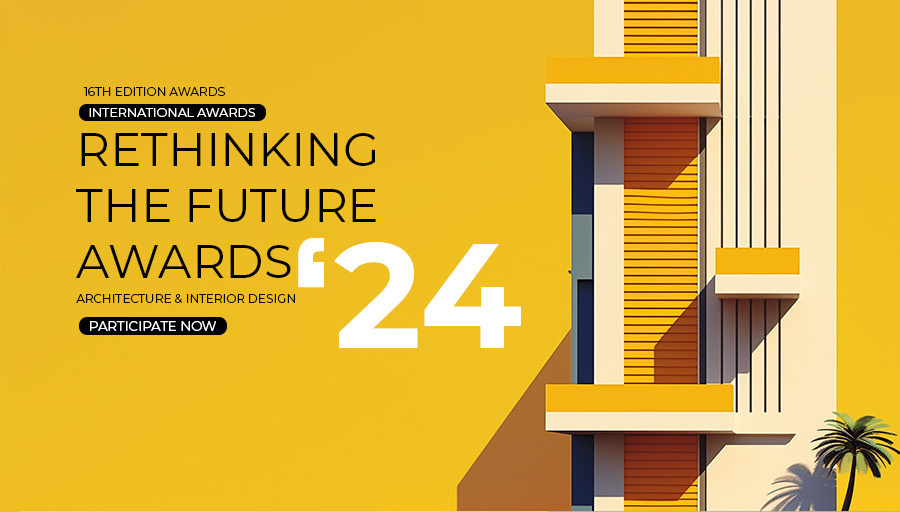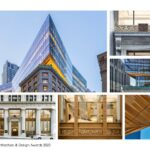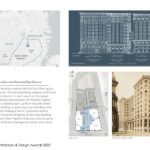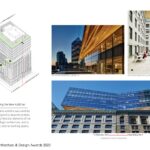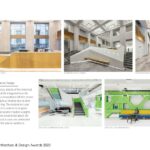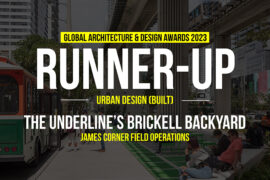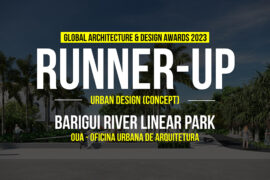40 Water Street outlines a new, more sustainable approach for adding density within historic urban contexts.
Occupying the northern point of Post Office Square in Downtown Boston, the project includes a 7-story, 120,000 SF addition to the existing National Shawmut Bank building, the first New England based bank with a national reach. The white Hallowell granite structure, designed by Winslow & Bigelow and constructed in 1906, was joined with the adjacent 1904 Monks Building, an early skyscraper with Beaux Arts detail designed by Peabody & Sterns, a prominent Boston architecture firm known for designing the Custom House Tower. Together, these buildings serve as important pieces of Boston’s historical urban fabric.
Global Design & Architecture Design Awards 2023
Second Award | Office Building (Built)
Project Name: Congress Square – 40 Water Street
Category: Office building (Built)
Studio Name: Arrowstreet
Design Team: Amy Korte, David Bois, Jason King
Area: 420,000 SF
Year: 2019
Location: Financial District, Boston, MA
Consultants:
- Structure: McNamara Silvia
- MEP, Code, LEED: Cosentini
- Civil: Nitsch Engineering
- Specification: Kalin Associates
- Mechanical, Electrical, Plumbing: Cosentini Associates
- Landscape: Halvorson Design Partnership
- Lighting: HLB Lighting
Photography Credits: Robert Benson, Robert Umenhofer, Elisif Brandon, James Chororos
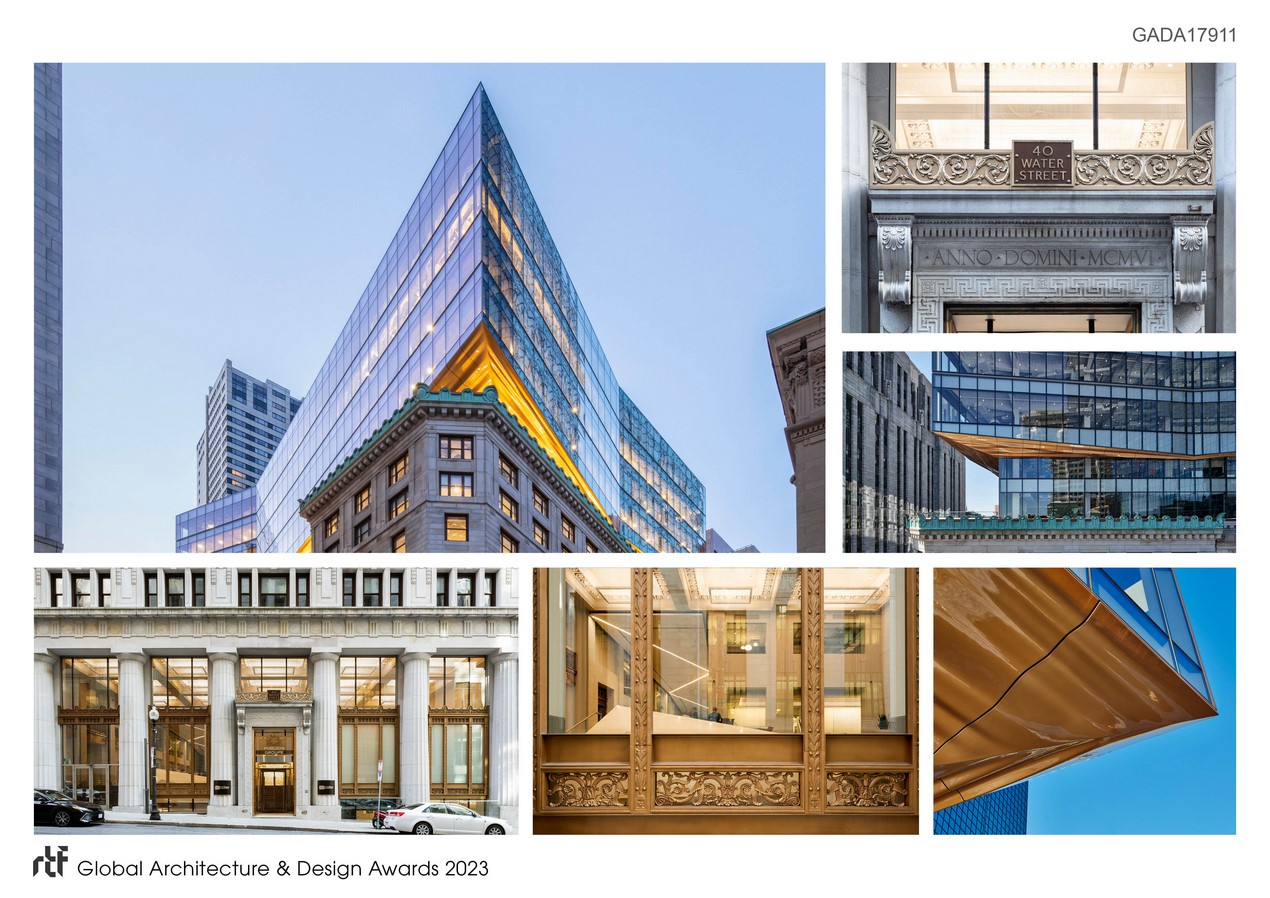
A new 7-story glass addition was built atop the existing structure, and carefully shaped to respond to adjacent context, align with key historical moments of the existing building’s architecture, and to create unique exterior working spaces. The first level of the addition is set back at the southeast corner, highlighting the historic copper cornice and creating exterior roof deck space with unparalleled views of Post Office Square. Overhanging the roof deck is an undulating fiber reinforced plastic soffit, painted to match the existing building’s refinished historic grillwork and up-lit to create a dynamic moment where new and old come together.
The project reduced embodied carbon through maximizing building reuse. Redundant core elements were removed, and an efficient centralized core was constructed within an underutilized lightwell, adding valuable SF to existing floors and improving sight lines. This innovative approach resulted in retaining 77% of the existing building’s floors, walls, and structure, and helped the project earn LEED Gold certification.

At the ground level, previous renovations left the ornate coffered ceiling in perpetual shadow due to dark paint and heavy downlighting. The restoration uses shades of white paint to restore the ceiling’s original brightness and incorporates modern uplights to accentuate the fine ornamental detail.
The project also strives to improve equity within the community. The original National Shawmut Bank building included dark glazing screened by heavy metal grillwork. While eliciting financial security, these features also fostered exclusion, hiding the historic lobby’s rich architectural detail from public view. The dark glazing was replaced with energy efficient, low-iron glazing creating unobstructed views from the public realm into the restored historic lobby. In addition, a new entrance was created at Quaker Lane, providing access from a nearby public transit node through the building, and giving the public the opportunity to fully experience one of Boston’s important historical structures, regardless of social background.
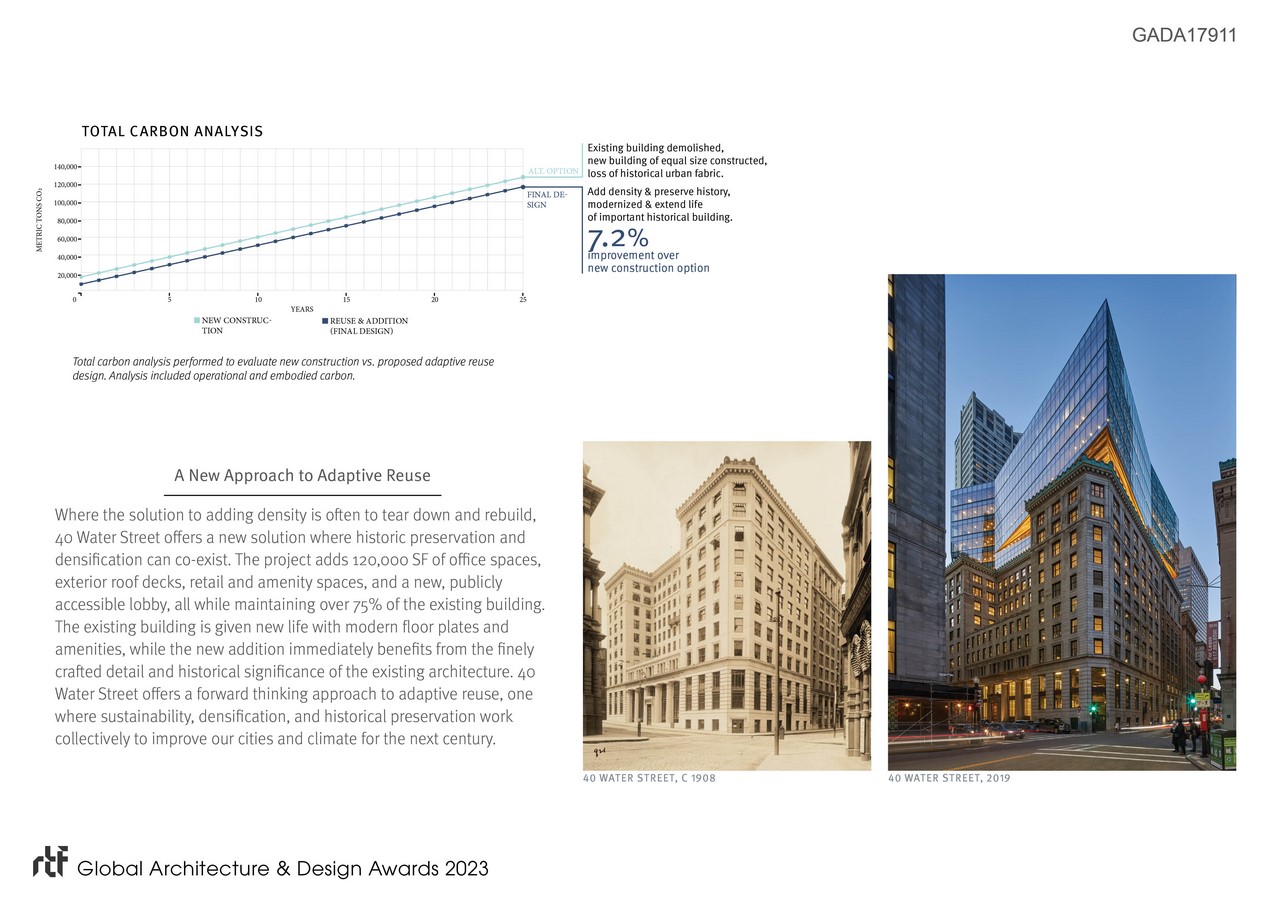
Overall, the project adds 120,000 SF of Class-A office space, multiple exterior roof decks, retail and amenity spaces, and a new publicly accessible lobby, all while reducing embodied carbon, improving equity within our communities, and preserving Boston’s historical urban fabric.
Where the solution to adding density is often to tear down and rebuild, 40 Water Street offers a new, forward-thinking approach to adaptive reuse where sustainability, densification, and historical preservation work collectively to improve our cities and climate for the next century.


